Chris Eboch's Blog, page 9
April 26, 2020
Video: Myths About Writing for Children #KidLit #amwriting
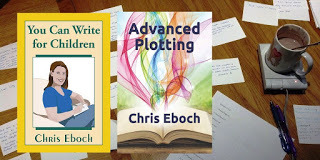 My video workshop "Myths About Writing for Children" is available online for free!
My video workshop "Myths About Writing for Children" is available online for free!"Writing for children is easier than writing for adults. You can't address tough topics in children's books. Children's books should be written in rhyme ..."
"The myths about writing for children are many, and sometimes contradictory. (You can't make money. You’ll get rich, like J.K. Rowling!) Learn the truth from the author of over 60 books for young people, including fiction and nonfiction, for beginning readers through teenagers."
Watch the 45-minute video here.
Want to learn more? Sign up for my live (online) workshop on plotting May 2!
 What I Learned from Nancy Drew—Tools for Fast-Paced Plotting
What I Learned from Nancy Drew—Tools for Fast-Paced PlottingWith Chris Eboch
Saturday, May 2, 2020, 12:30 – 2:30 pm Mountain Time
Platform: Zoom Live Meeting
$20 SWW members, $30 Non-members
* must register and pay by Friday, May 1, 2020
A ghostwriter shares what she learned while writing about a famous sleuth, from “grab you by the throat” openings to cliffhanger chapter endings and always more, more, more action. Now learn how you can use these techniques to make any story or book better. Writers at all levels can use these tips for both fiction and nonfiction, including memoir.
To Register:
Call the SWW office (505-830-6034, Monday–Thursday, 9:00 am-noon) or use the Online Registration Form.
The Zoom invitation link and the password will be emailed to those who purchase this workshop.
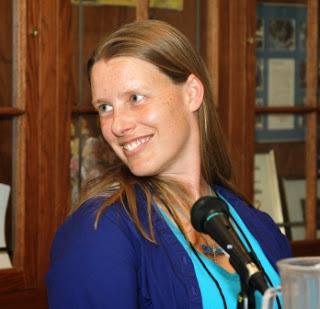 Instructor’s Bio:
Instructor’s Bio:Chris Eboch’s books for children include nonfiction and fiction, early reader through teens. Her novels for ages nine and up include The Eyes of Pharaoh, a mystery in ancient Egypt; The Well of Sacrifice, a Mayan adventure; and The Genie’s Gift, a middle eastern fantasy. Her writing craft books include Advanced Plotting and You Can Write for Children: How to Write Great Stories, Articles, and Books for Kids and Teenagers. Visit Chris’ website at ChrisEboch.com.
Published on April 26, 2020 05:30
April 2, 2020
Turning an Idea into Story: End with a Bang #writing #amwriting
 I've been talking about turning an idea into a story by breaking it down into four main parts: situation, complications, climax, and resolution.
I've been talking about turning an idea into a story by breaking it down into four main parts: situation, complications, climax, and resolution. I covered setting up the situation and building a strong middle full of action and conflict (check the links on the right to see all the posts on developing ideas, plotting, etc). Now we get to the climax and resolution.
Can She Do It?!
Your character has faced complications through the middle of the story. Finally, at the climax, the main character must succeed or fail. Time is running out. The race is near the end. The girl is about to date another guy. The villain is starting the battle. One way or another, your complications have set up a situation where it’s now or never.
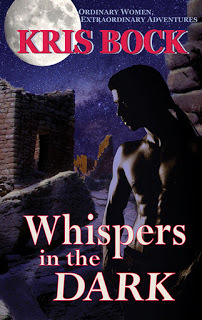 However you get there, the climax will be strongest if it is truly the last chance. You lose tension if the reader believes the main character could fail this time, and simply try again tomorrow.
However you get there, the climax will be strongest if it is truly the last chance. You lose tension if the reader believes the main character could fail this time, and simply try again tomorrow.In my romantic suspense novel Whispers in the Dark, the climax comes when the heroine is injured and being pursued by a villain. If she can escape, maybe she can stop the bad guys and save her love interest.
But the penalty for failure is death—the highest stake of all. Short stories, different genres, or novels for younger kids might have lesser stakes, but the situation should still be serious.
 Tips:
Tips:• Don’t rush the climax. Take the time to write the scene out in vivid detail, even if the action is happening fast. Think of how movies switch to slow motion, or use multiple shots of the same explosion, in order to give maximum impact to the climax. Use multiple senses and your main character’s thoughts and feelings to pull every bit of emotion out of the scene.
• To make the climax feel fast-paced, use mainly short sentences and short paragraphs. The reader’s eyes move more quickly down the page, giving a sense of breathless speed. (This is a useful technique for cliffhanger chapter endings as well.)
Happy Endings
The climax ends with the resolution. You could say that the resolution finishes the climax, but it comes from the situation: it’s how the main character finally meets that original challenge.
In almost all cases the main character should resolve the situation himself. No cavalry to the rescue! Today, even romance novels rarely have the hero saving the heroine; she at least helps out (and may very well save him instead). We’ve been rooting for the main character to succeed, so if someone else steals the climax away from him or her, it robs the story of tension and feels unfair.
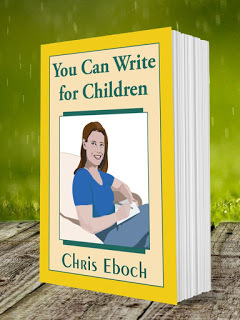 Here’s where many beginning children’s writers fail. It’s tempting to have an adult—a parent, grandparent, or teacher, or even a fairy, ghost, or other supernatural creature—step in to save the child or tell him what to do.
Here’s where many beginning children’s writers fail. It’s tempting to have an adult—a parent, grandparent, or teacher, or even a fairy, ghost, or other supernatural creature—step in to save the child or tell him what to do. But kids are inspired by reading about other children who tackle and resolve problems. It helps them believe that they can meet their challenges, too. When adults take over, it shows kids as powerless and dependent on grownups.
Regardless of your character’s age, let your main character control the story all the way to the end (though others may assist).
Although your main character should be responsible for the resolution, she doesn’t necessarily have to succeed. She might, instead, realize that her goals have changed. The happy ending then comes from her new understanding of her real needs and wants.
Some stories may even have an unhappy ending, where the main character’s failure acts as a warning to readers. This is more common in literary novels than in genre fiction.
Tip: How the main character resolves the situation—whether she succeeds or fails, and what rewards or punishments she receives—will determine the theme. To help focus your theme, ask yourself:
What am I trying to accomplish? Who am I trying to reach? Why am I writing this?
Once you know your theme, you know where the story is going and how it must be resolved. For example, a story with the theme “Love conquers all” would have a different resolution than a story with the theme “Love cannot always survive great hardship.”
The next time you have a great idea but can’t figure out what to do with it, see if you have all four parts of the story. If not, see if you can develop that idea into a complete, dramatic story or novel by expanding your idea, complications, climax or resolution, as needed. Then readers will be asking you, “Where did you get that fabulous idea?”
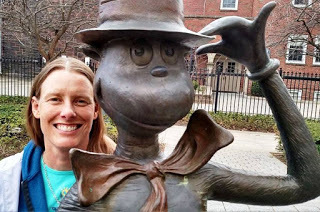 Take a Step toward Publication – get a critique from Chris
Take a Step toward Publication – get a critique from Chris Novels: $2 per page (standard manuscript format/double-spaced) for general editorial comments (plot/character/flow/language notes). This provides a 4 to 6 page editorial letter, plus notes written on the manuscript. Minimum $100.
Picture Books up to 1200 words: $50Email me through the contact page on my website. A sample critique letter and recommendations are available on request.
Do you need help analyzing a plot? Download The Plot Outline Exercise from Advanced Plotting in a form you can edit and reuse! (For more about Advanced Plotting, scroll down.)
 Chris Eboch is the author of over 60 books for children, including nonfiction and fiction, early reader through teen. Her novels for ages nine and up include The Eyes of Pharaoh, a mystery in ancient Egypt; The Well of Sacrifice, a Mayan adventure; The Genie’s Gift, a middle eastern fantasy; and the Haunted series, about kids who travel with a ghost hunter TV show, which starts with The Ghost on the Stairs. Her writing craft books include You Can Write for Children: How to Write Great Stories, Articles, and Books for Kids and Teenagers, and Advanced Plotting.
Chris Eboch is the author of over 60 books for children, including nonfiction and fiction, early reader through teen. Her novels for ages nine and up include The Eyes of Pharaoh, a mystery in ancient Egypt; The Well of Sacrifice, a Mayan adventure; The Genie’s Gift, a middle eastern fantasy; and the Haunted series, about kids who travel with a ghost hunter TV show, which starts with The Ghost on the Stairs. Her writing craft books include You Can Write for Children: How to Write Great Stories, Articles, and Books for Kids and Teenagers, and Advanced Plotting.Learn more or read excerpts at www.chriseboch.com or visit her page on Amazon or Amazon UK. (For other countries click here.)
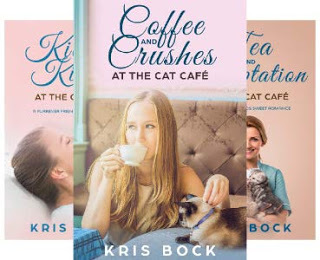 Kris Bockwrites novels of romance, mystery, and suspense. Her Furrever Friends Sweet Romance series features the employees and customers at a cat café. Watch as they fall in love with each other and shelter cats. Get a free 10,000-word story set in the world of the Furrever Friends cat café when you sign up for the Kris Bock newsletter. You’ll also get a printable copy of the recipes mentioned in the cat café novels.
Kris Bockwrites novels of romance, mystery, and suspense. Her Furrever Friends Sweet Romance series features the employees and customers at a cat café. Watch as they fall in love with each other and shelter cats. Get a free 10,000-word story set in the world of the Furrever Friends cat café when you sign up for the Kris Bock newsletter. You’ll also get a printable copy of the recipes mentioned in the cat café novels.Learn more at www.krisbock.comor visit Kris Bock’s Amazon US page or Amazon UK page. (For other countries click here.)
Published on April 02, 2020 04:00
March 29, 2020
How to Turn Your Idea into a Story: More Conflict! #amwriting #writing
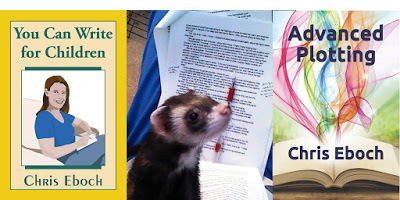 Here are a few more tips on setting up conflict, following the lesson from last time:
Here are a few more tips on setting up conflict, following the lesson from last time:• What does your main character want? What does he need? Make these things different, and you'll add tension to the story. It can be as simple as our soccer player who wants to practice soccer, but needs to study. Or it could be more subtle, like someone who wants to be protected but needs to learn independence.
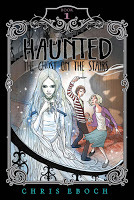 In the Haunted books, Jon wants to be a regular kid, and fit in, but needs to protect his sister – who gets him into trouble and embarrassing situations. This increases the tension and gives the reader sympathy for my main character.
In the Haunted books, Jon wants to be a regular kid, and fit in, but needs to protect his sister – who gets him into trouble and embarrassing situations. This increases the tension and gives the reader sympathy for my main character. For a more detailed explanation of character want versus need, exploring the movie ET as an example, see my brother Doug Eboch’s Let's Schmooze blog on Screenwriting, E.T. Analysis Part 11.
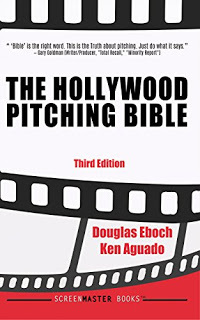
Doug is also the author of The Three Stages of Screenwriting and The Hollywood Pitching Bible.
• Even if your main problem is external (man versus man or man versus nature), consider giving the character an internal flaw(man versus himself) that contributes to the difficulty.
For a few examples of internal flaws, see the seven deadly sins: lust, gluttony, greed, sloth, wrath, envy and pride.
Perhaps your character has a temper, or is lazy, or refuses to ever admit she’s wrong. This helps set up your complications, and as a bonus makes your character seem more real.
• Before you start, test the idea. Change the character’s age, gender, or looks. Change the point of view. Change the setting. Change the external conflict. Change the internal conflict.
What happens? Choose the combination that has the most dramatic potential.
For example, one work in progress started with two female cousins visiting. I changed one into a boy, and added a girl friend next door, which made for nice boy/girl tension behind the main plot.
Take a Step toward Publication – get a critique from Chris
Novels: $2 per page (standard manuscript format/double-spaced) for general editorial comments (plot/character/flow/language notes). This provides a 4 to 6 page editorial letter, plus notes written on the manuscript. Minimum $100.
Picture Books up to 1200 words: $50
Email me through the contact page on my website. A sample critique letter and recommendations are available on request.
Do you need help analyzing a plot? Download The Plot Outline Exercise from Advanced Plotting in a form you can edit and reuse! (For more about Advanced Plotting, scroll down.)
 Chris Eboch is the author of over 60 books for children, including nonfiction and fiction, early reader through teen. Her novels for ages nine and up include The Eyes of Pharaoh, a mystery in ancient Egypt; The Well of Sacrifice, a Mayan adventure; The Genie’s Gift, a middle eastern fantasy; and the Haunted series, about kids who travel with a ghost hunter TV show, which starts with The Ghost on the Stairs. Her writing craft books include You Can Write for Children: How to Write Great Stories, Articles, and Books for Kids and Teenagers, and Advanced Plotting.
Chris Eboch is the author of over 60 books for children, including nonfiction and fiction, early reader through teen. Her novels for ages nine and up include The Eyes of Pharaoh, a mystery in ancient Egypt; The Well of Sacrifice, a Mayan adventure; The Genie’s Gift, a middle eastern fantasy; and the Haunted series, about kids who travel with a ghost hunter TV show, which starts with The Ghost on the Stairs. Her writing craft books include You Can Write for Children: How to Write Great Stories, Articles, and Books for Kids and Teenagers, and Advanced Plotting.Learn more or read excerpts at www.chriseboch.com or visit her page on Amazon or Amazon UK. (For other countries click here.)
Published on March 29, 2020 04:00
March 26, 2020
How to Turn Your Idea into a Story: Setting up Plot Conflict #amwriting #writing
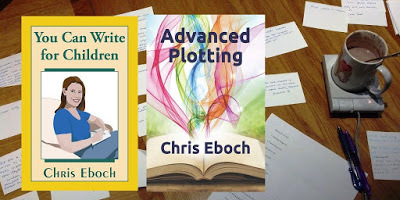 To develop your story, you'll need conflict. But conflict doesn't just come from dramatic things happening. It comes from the character – what he or she needs and wants, and why he or she can't get it easily.
To develop your story, you'll need conflict. But conflict doesn't just come from dramatic things happening. It comes from the character – what he or she needs and wants, and why he or she can't get it easily. Start with a premise: a kid has a math test on Monday. Exciting? Not really. But ask two simple questions, and you can add conflict.
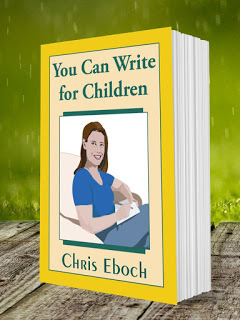 • Why is it important to the character? The stakes should be high. The longer the story or novel, the higher stakes you need to sustain it. A short story character might want to win a contest; a novel character might need to save the world.
• Why is it important to the character? The stakes should be high. The longer the story or novel, the higher stakes you need to sustain it. A short story character might want to win a contest; a novel character might need to save the world.• Why is it difficult for the character? Difficulties can be divided into three general categories, traditionally called man versus man, man versus nature, and man versus himself. You can even have a combination of these. For example, someone may be trying to spy on some bank robbers (man versus man) during a dangerous storm (man versus nature) when he is afraid of lightning (man versus himself).
 Back to the kid with the math test. Let’s say, if he doesn’t pass, maybe he will fail the class, have to go to summer school, and not get to go to soccer camp, when soccer is what he loves most, and all his friends will be going. That’s why it’s important. Assuming we create a character readers will like, they'll care about the outcome of this test, and root for him to succeed.
Back to the kid with the math test. Let’s say, if he doesn’t pass, maybe he will fail the class, have to go to summer school, and not get to go to soccer camp, when soccer is what he loves most, and all his friends will be going. That’s why it’s important. Assuming we create a character readers will like, they'll care about the outcome of this test, and root for him to succeed.Our soccer lover could have lots of challenges—he forgot his study book, he’s expected to baby-sit his distracting little sister, a storm knocked out the power, he has ADHD, or he suffers test anxiety. But ideally we would relate the difficulty to the reason it's important. So let's say he has a big soccer game Sunday afternoon, and is getting pressure from his coach and teammates to practice rather than study for his test. Plus, of course, he'd rather play soccer anyway.
We now have a situation full of potential tension. Let the character struggle enough before he succeeds (or fails and learns a lesson), and you’ll have a story. And if these two questions can pump up a dull premise, just think what they can do with an exciting one!
Come back next time for more tips on linking your conflict to your character.
Take a Step toward Publication – get a critique from Chris
Novels: $2 per page (standard manuscript format/double-spaced) for general editorial comments (plot/character/flow/language notes). This provides a 4 to 6 page editorial letter, plus notes written on the manuscript. Minimum $100.
Picture Books up to 1200 words: $50Email me through the contact page on my website. A sample critique letter and recommendations are available on request.
Do you need help analyzing a plot? Download The Plot Outline Exercise from Advanced Plotting in a form you can edit and reuse! (For more about Advanced Plotting, scroll down.)
Thinking of self-publishing? Get the Indie_Publishing_Worksheet to see if you’re on track.
 Chris Eboch is the author of over 60 books for children, including nonfiction and fiction, early reader through teen. Her novels for ages nine and up include The Eyes of Pharaoh, a mystery in ancient Egypt; The Well of Sacrifice, a Mayan adventure; The Genie’s Gift, a middle eastern fantasy; and the Haunted series, about kids who travel with a ghost hunter TV show, which starts with The Ghost on the Stairs. Her writing craft books include You Can Write for Children: How to Write Great Stories, Articles, and Books for Kids and Teenagers, and Advanced Plotting.
Chris Eboch is the author of over 60 books for children, including nonfiction and fiction, early reader through teen. Her novels for ages nine and up include The Eyes of Pharaoh, a mystery in ancient Egypt; The Well of Sacrifice, a Mayan adventure; The Genie’s Gift, a middle eastern fantasy; and the Haunted series, about kids who travel with a ghost hunter TV show, which starts with The Ghost on the Stairs. Her writing craft books include You Can Write for Children: How to Write Great Stories, Articles, and Books for Kids and Teenagers, and Advanced Plotting.Learn more or read excerpts at www.chriseboch.com or visit her page on Amazon or Amazon UK. (For other countries click here.)
Published on March 26, 2020 04:00
March 23, 2020
“What do I do with my idea?” Turning Inspiration into Story: #amwriting #writing
 People often ask writers, “Where do you find your ideas?” But for a writer, the more important question is, “What do I do with my idea?”
People often ask writers, “Where do you find your ideas?” But for a writer, the more important question is, “What do I do with my idea?”If you have a “great idea,” but can’t seem to go anywhere with it, you probably have a premise rather than a complete story plan. A story has four main parts: situation, complications, climax, and resolution. You need all of them to make your story work.
The situation should involve an interesting main character with a challenging problem or goal. Even this takes development. Maybe you have a great challenge, but aren’t sure why a character would have that goal. Or maybe your situation is interesting, but doesn’t actually involve a problem.
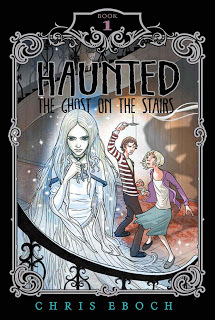 For example, I wanted to write about a brother and sister who travel with a ghost hunter TV show. The girl can see ghosts, but the boy can’t. That gave me the characters and situation, but no problem or goal. Goals come from need or desire. What did they want that could sustain a series?
For example, I wanted to write about a brother and sister who travel with a ghost hunter TV show. The girl can see ghosts, but the boy can’t. That gave me the characters and situation, but no problem or goal. Goals come from need or desire. What did they want that could sustain a series?Tania feels sorry for the ghosts and wants to help them, while keeping her gift a secret from everyone but her brother. Jon wants to help and protect his sister, but sometimes feels overwhelmed by the responsibility. Now we have characters with problems and goals. The story is off to a good start.
• Make sure your idea is specific and narrow. Focus on an individual person and situation, not a universal concept. For example, don’t try to write about “racism.” Instead, write about one character facing racism in a particular situation.
• Ask why the goal is important to the character. The longer the story, the higher stakes needed to sustain it. A short story character might want to win a contest; a novel character might need to save the world.
• Ask why this goal is difficult. Difficulties fall into categories traditionally called man versus man, man versus nature, and man versus himself. You can even combine these. Your character may hunt bank robbers (person versus person) during a dangerous storm (person versus nature) when he is afraid of lightning (person versus himself).
• Even if your main problem is external, give the character an internal flaw that contributes to the difficulty. This adds complications and also makes your character seem more real. For some internal flaws, see the seven deadly sins: lust, gluttony, greed, sloth, wrath, envy, and pride.
• Test the idea. Change the character’s age, gender, or looks. Change the point of view, setting, external conflict, internal conflict. Choose the combination that has the most dramatic potential.
Next time: Building the middle of your story.
 Chris Eboch is the author of over 60 books for children, including nonfiction and fiction, early reader through teen. Her novels for ages nine and up include The Eyes of Pharaoh, a mystery in ancient Egypt; The Well of Sacrifice, a Mayan adventure; The Genie’s Gift, a middle eastern fantasy; and the Haunted series, about kids who travel with a ghost hunter TV show, which starts with The Ghost on the Stairs. Her writing craft books include You Can Write for Children: How to Write Great Stories, Articles, and Books for Kids and Teenagers, and Advanced Plotting.
Chris Eboch is the author of over 60 books for children, including nonfiction and fiction, early reader through teen. Her novels for ages nine and up include The Eyes of Pharaoh, a mystery in ancient Egypt; The Well of Sacrifice, a Mayan adventure; The Genie’s Gift, a middle eastern fantasy; and the Haunted series, about kids who travel with a ghost hunter TV show, which starts with The Ghost on the Stairs. Her writing craft books include You Can Write for Children: How to Write Great Stories, Articles, and Books for Kids and Teenagers, and Advanced Plotting. Learn more or read excerpts at www.chriseboch.com or visit her page on Amazon or Amazon UK. (For other countries click here.)
Published on March 23, 2020 04:00
March 17, 2020
Stuck at home? Going crazy? Keep writing! #amwriting #amediting
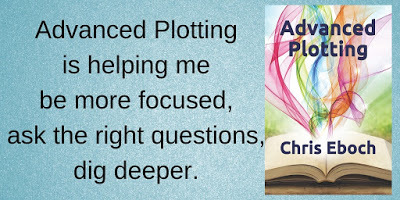 Get Advanced Plotting from Amazon in print or ebook.We're in a crazy time. We may have more time to write while isolating at home ... but it’s hard to get any writing done when everyone is home, and anxiety is high.
Get Advanced Plotting from Amazon in print or ebook.We're in a crazy time. We may have more time to write while isolating at home ... but it’s hard to get any writing done when everyone is home, and anxiety is high. If you need help shaping your novel, or identifying problems, consider getting a professional critique. You can find my rates and recommendations here (short version: developmental/content editing at $2 per page for a novel, $50 for a picture book).
Books on writing can give you advice on every aspect of writing.

Advanced Plotting is designed for the intermediate and advanced writer: you’ve finished a few manuscripts, read books and articles on writing, taken some classes, attended conferences. But you still struggle with plot, or suspect that your plotting needs work.
This book can help.
Read the book straight through, study the index to find help with your current problem, or dip in and out randomly — however you use this book, you’ll find fascinating insights and detailed tips to help you build a stronger plot and become a better writer.
 "This really is helping me a lot. It’s written beautifully and to-the-point. The essays really help you zero in on your own problems in your manuscript. The Plot Outline Exercise is a great tool!"
"This really is helping me a lot. It’s written beautifully and to-the-point. The essays really help you zero in on your own problems in your manuscript. The Plot Outline Exercise is a great tool!"If you write for kids or teens, check out You Can Write for Children: How to Write Great Stories, Articles, and Books for Kids and Teenagers, and Advanced Plotting. Learn more at www.chriseboch.com or my Amazon or Amazon UK. (For other countries click here.)
Here are some other writing craft books I like. The links are to the authors’ websites or blogs. If you want to buy, it might be faster to go to your favorite online retailer and paste in the name, or ask your local bookstore to order the book.
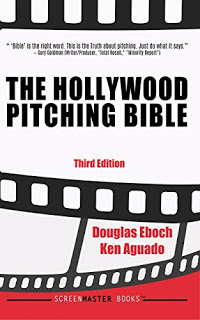 My brother, scriptwriter Douglas Eboch, is co-author of
The Hollywood Pitching Bible
. While it’s targeted at scriptwriters wanting to sell screenplays, a lot of the material is helpful and interesting to novelists as well, especially if you are trying to find your book’s “hook” or write a query/synopsis.
My brother, scriptwriter Douglas Eboch, is co-author of
The Hollywood Pitching Bible
. While it’s targeted at scriptwriters wanting to sell screenplays, a lot of the material is helpful and interesting to novelists as well, especially if you are trying to find your book’s “hook” or write a query/synopsis.Self-Editing for Fiction Writers , by Renni Browne and Dave King is one of my favorite writing craft books. Each chapter covers a specific tip for improving your style, and exercises at the end (with answers in the back) help you see if you are really “getting it.”
There’s a good book by Nancy Sanders called Yes! You Can Learn How to Write Children’s Books, Get Them Published, and Build a Successful Writing Career , which points out that we typically write for three reasons – the emotional satisfaction of getting published, to make money, and for the love of writing. She suggests separating those three goals, so you don’t put pressure on yourself to sell what you are writing for love, and you find more practical ways of approaching the other two goals. She then addresses how to target each goal.
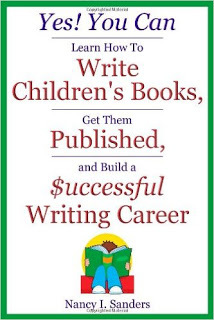 Nancy also has Yes! You Can Learn How to Write Beginning Readers and Chapter Books.
Nancy also has Yes! You Can Learn How to Write Beginning Readers and Chapter Books.The Idiot’s Guide to Children’s Book Publishing , by Harold Underdown, is an excellent overview of the business. It explains the different genres, the difference between a magazine story and a picture book manuscript, how to find a publisher, etc.
I’m a big fan of using close/deep point of view. Jill Elizabeth Nelson has a book called Rivet Your Readers with Deep POV.
And if you need help with grammar (or know someone who does), these have been recommended by writing teachers I know:
Things That Make Us (Sic), by Martha BrockenbroughEats, Shoots, and Leaves: The Zero Tolerance Approach to Punctuation by Lynne TrussPainless Grammar, by Rebecca ElliottGrammatically Correct by Anne Stilman
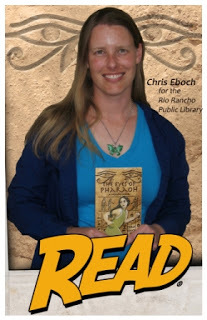 Please share your other favorite books in the comments.
Please share your other favorite books in the comments. Chris Eboch’s novels for ages nine and up include The Eyes of Pharaoh, a mystery in ancient Egypt; The Well of Sacrifice, a Mayan adventure; The Genie’s Gift, a middle eastern fantasy; and the Haunted series, about kids who travel with a ghost hunter TV show.
Learn more at www.chriseboch.com or her Amazon or Amazon UK. (For other countries click here.)
Published on March 17, 2020 03:30
March 15, 2020
Connecting Kids to History #historyteaching Get #lessonplans 4 #teachers or #homeschool
 Stuck at home with kids to educate and entertain? Trying to teach kids history long distance?
Stuck at home with kids to educate and entertain? Trying to teach kids history long distance?Historical fiction is a great way to bring history to life. It’s especially valuable for young people, who may not find textbook history interesting.
I’ve been impressed with the many wonderful ways teachers come up with to use historical fiction in the classroom. Consider this teacher’s review for my novel The Well of Sacrifice:
“My class (fourth/fifth graders) read this book for our theme: The Maya. The book gave authentic facts about the Mayan culture and a plausible explanation for the demise of their culture. We used the book as the backbone of several language arts exercises such as: written and oral reports about the Maya, literary criticism of characters, plot, and sequence, persuasive essays on human sacrifice vs. murder and Mayan culture vs. our own culture; and art projects from wood burning to mapping. We studied geography and the rainforest. The students’ enthusiasm for this book pushed our curriculum into other disciplines including math.”
Get her lesson plans here. I also provide free Lesson Plans aligned to the Common Core State Standards (CCSS).
Historical fiction can connect to other curriculum areas as well. Some teachers like to have students write their own versions of what happened after my book ends. Their answers can range from marriage and happily ever after, to massive death and destruction. This type of exercise another way to get young people engaged with history.
History Lessons That Resonate
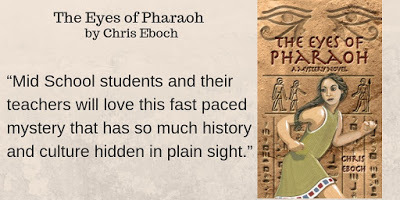 Using historical fiction in the classroom or at home can help kids understand history better. It can also help them understand and identify with people of the past. If they can do that, they should be better able to understand and identify with different people today.
Using historical fiction in the classroom or at home can help kids understand history better. It can also help them understand and identify with people of the past. If they can do that, they should be better able to understand and identify with different people today. My Egyptian mystery The Eyes of Pharaoh also works as supplemental fiction. The Eyes of Pharaoh is ideal for use in elementary and middle school classrooms.
“Using this historical fiction is a window into Ancient Egypt—its people, culture, and beliefs. My class enjoyed doing research on Egyptian gods and goddesses, and hieroglyphs. Projects extended their knowledge of this fascinating time and place. I also highly recommend it for its fast-paced plot, interesting and ‘real’ characters, and excellent writing.” – teacher of gifted fourth and fifth graders
There are loads of projects classes can do, from art to discussion groups to persuasive letters. In addition, my book explores themes of national pride and attitudes about foreigners and immigration. The book can be used as a discussion starter.
But often it’s the simple things that help kids connect. For example, the ancient Egyptians may seem wildly exotic in their religion and architecture. Yet their food sounds tasty, and you don’t find too many things that sound yucky-weird – instead it’s “platters piled with joints of meat, bread baked into animal shapes, cheese, nuts, and fresh fruit.” I did a school visit and one of the students brought in “honey cakes” her mother had made from a recipe she found online. They were similar to cornbread served with honey, simple and tasty.
Historical fiction shows our differences, but also our similarities.
Teachers who would like lesson plans associated with the book can find them at my website, or the publisher’s websitelinks to these and lesson plans for other novels.
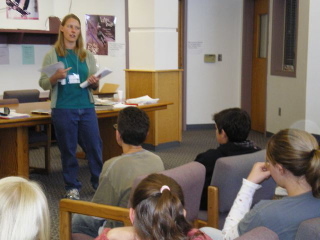 Find the books:
Find the books: at Amazon or Amazon UK. (For other countries click here.)at B&N/Nook
at Kobo at iBooks
If you buy a classroom or school set of 6 or more copies, contact me via my website for a free Skype visit.
Published on March 15, 2020 10:17
January 29, 2020
How Do You Turn Your Idea into a Story? Follow-Up for #STORYSTORM
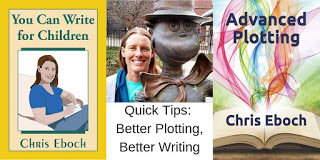 January was #STORYSTORM with Tara Lazar. Formerly known as #PiBoIdMo, the challenge was to come up with one new story idea each day of the month. Maybe you met the challenge every day, or maybe you came up with fewer ideas. Either way, the next question is, "Now what?
January was #STORYSTORM with Tara Lazar. Formerly known as #PiBoIdMo, the challenge was to come up with one new story idea each day of the month. Maybe you met the challenge every day, or maybe you came up with fewer ideas. Either way, the next question is, "Now what?Sometimes, a writer has a great premise, an intriguing starting point—but nothing more. How do you recognize when you have just a premise, and when you have the makings of a full story? And more importantly, how do you get from one stage to the other?
What is a story?
If you have a “great idea,” but can’t seem to go anywhere with it, you probably have a premise rather than a complete story plan. A story has four main parts: idea, complications, climax and resolution. You need all of them to make your story work.
The idea is the situation or premise. This should involve an interesting main character with a challenging problem or goal. Even this takes development. Maybe you have a great challenge, but aren’t sure why a character would have that goal. Or maybe your situation is interesting, but doesn’t actually involve a problem.
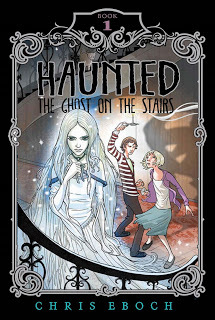 For example, I wanted to write about a brother and sister who travel with a ghost hunter TV show. The girl can see ghosts, but the boy can’t. That gave me the characters and the situation, but no problem or goal. Goals come from need or desire. What did they want that could sustain an entire series?
For example, I wanted to write about a brother and sister who travel with a ghost hunter TV show. The girl can see ghosts, but the boy can’t. That gave me the characters and the situation, but no problem or goal. Goals come from need or desire. What did they want that could sustain an entire series?Tania feels sorry for the ghosts and wants to help them, while keeping her gift a secret from everyone but her brother. Jon wants to help and protect his sister, but sometimes feels overwhelmed by the responsibility.
Now we have two main characters with problems and goals. The story is off to a good start. (It became Haunted: The Ghost on the Stairs.)
Tip:
Make sure your idea is specific and narrow, especially with short stories or articles. Focus on an individual person and situation, not a universal concept. For example, don’t try to write about “racism.” Instead, write about one character facing racism in a particular situation.
See the links to posts on developing ideas or conflict in the right-hand column for more help.
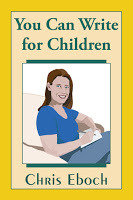 Chris Eboch is the author of over 40 books for children, including nonfiction and fiction, early reader through teen. Chris Eboch’s novels for ages nine and up include The Eyes of Pharaoh, a mystery in ancient Egypt; The Well of Sacrifice, a Mayan adventure; The Genie’s Gift, a middle eastern fantasy; and the Haunted series, about kids who travel with a ghost hunter TV show, which starts with The Ghost on the Stairs.
Chris Eboch is the author of over 40 books for children, including nonfiction and fiction, early reader through teen. Chris Eboch’s novels for ages nine and up include The Eyes of Pharaoh, a mystery in ancient Egypt; The Well of Sacrifice, a Mayan adventure; The Genie’s Gift, a middle eastern fantasy; and the Haunted series, about kids who travel with a ghost hunter TV show, which starts with The Ghost on the Stairs. 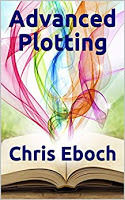 Her writing craft books include You Can Write for Children: How to Write Great Stories, Articles, and Books for Kids and Teenagers, and Advanced Plotting.
Her writing craft books include You Can Write for Children: How to Write Great Stories, Articles, and Books for Kids and Teenagers, and Advanced Plotting. Learn more at www.chriseboch.comor her Amazon page.
Published on January 29, 2020 04:00
January 22, 2020
#STORYSTORM - Developing Your Picture Book Ideas
 I discussed Finding the Seeds of Stories for STORYSTORM. When brainstorming, it's fine if you think up quick, basic ideas that need a lot of development – you’ve still met the challenge! But you may want to spend a little more time developing your idea before trying to write a draft for National Picture Book Writing Week (#NaPiBoWriWee, May 1-7).
I discussed Finding the Seeds of Stories for STORYSTORM. When brainstorming, it's fine if you think up quick, basic ideas that need a lot of development – you’ve still met the challenge! But you may want to spend a little more time developing your idea before trying to write a draft for National Picture Book Writing Week (#NaPiBoWriWee, May 1-7).(The following is excerpted from You Can Write for Children: How to Write Great Stories, Articles, and Books for Kids and Teenagers. The bookis available for the Kindle, in paperback, or in Large Print paperback. That book and Advanced Plotting will provide lots of help as you write and edit.)
Developing an Idea
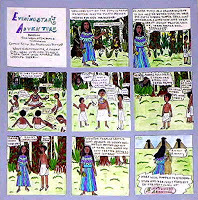 Once you have your idea, it’s time to develop it into a story or novel. Of course, you can simply start writing and see what happens. Sometimes that’s the best way to explore an idea and see which you want to say about it. But you might save time – and frustration – by thinking about the story in advance. You don’t have to develop a formal, detailed outline, but a few ideas about what you want to say, and where you want the story to go, can help give you direction.
Once you have your idea, it’s time to develop it into a story or novel. Of course, you can simply start writing and see what happens. Sometimes that’s the best way to explore an idea and see which you want to say about it. But you might save time – and frustration – by thinking about the story in advance. You don’t have to develop a formal, detailed outline, but a few ideas about what you want to say, and where you want the story to go, can help give you direction. You can look at story structure in several ways. Here’s one example of the parts of a story or article:
· A catchy title. The best titles hint at the genre or subject matter.
· A dramatic beginning, with a hook. A good beginning:
– grabs the reader’s attention with action, dialogue, or a hint of drama to come
– sets the scene
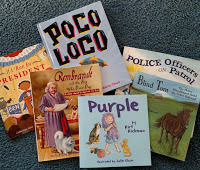 – indicates the genre and tone (in fiction) or the article type (in nonfiction)
– indicates the genre and tone (in fiction) or the article type (in nonfiction)– has an appealing style
· A solid middle, which moves the story forward or fulfills the goal of the article.
Fiction should focus on a plot that builds to a climax, with character development. Ideally the character changes by learning the lesson of the story.
Nonfiction should focus on information directly related to the main topic. It should be organized in a logical way, with transitions between subtopics. The tone should be friendly and lively, not lecturing. Unfamiliar words should be defined within the text, or in a sidebar.
· A satisfying ending that wraps up the story or closes the article. Endings may circle back to the beginning, repeating an idea or scene, but showing change. The message should be clear here, but not preachy. What did the character learn?
· Bonus material: An article, short story, or picture book may use sidebars, crafts, recipes, photos, etc. to provide more value. For nonfiction, include a bibliography with several reliable sources.
Take a look at one of your STORYSTORM ideas. Can you start developing it by thinking about story structure in this way?
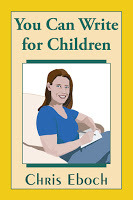 You Can Write for Children: How to Write Great Stories, Articles, and Books for Kids and Teenagers is available for the Kindle, in paperback, or in Large Print paperback.
You Can Write for Children: How to Write Great Stories, Articles, and Books for Kids and Teenagers is available for the Kindle, in paperback, or in Large Print paperback. Advanced Plotting is available in print or ebook at Amazon and in print at Barnes & Noble online.
 Chris Eboch’s Haunted series for ages 9-12 features The Ghost on the Stairs, The Riverboat Phantom and The Knight in the Shadows. Her other books include The Well of Sacrifice, a middle grade Mayan adventure, used in many schools, and the inspirational biographies Jesse Owens: Young Record Breaker and Milton Hershey: Young Chocolatier, written under the name the M.M. Eboch. See her website at https://chriseboch.com/
Chris Eboch’s Haunted series for ages 9-12 features The Ghost on the Stairs, The Riverboat Phantom and The Knight in the Shadows. Her other books include The Well of Sacrifice, a middle grade Mayan adventure, used in many schools, and the inspirational biographies Jesse Owens: Young Record Breaker and Milton Hershey: Young Chocolatier, written under the name the M.M. Eboch. See her website at https://chriseboch.com/
Published on January 22, 2020 06:00
January 15, 2020
#STORYSTORM The Parts of a Story or Article for Children
 Jan. 1-31 is #STORYSTORM with Tara Lazar. Formerly known as #PiBoIdMo, the challenge is to come up with one new story idea each day of the month. To meet this challenge, it might help to think about what makes a story.
Jan. 1-31 is #STORYSTORM with Tara Lazar. Formerly known as #PiBoIdMo, the challenge is to come up with one new story idea each day of the month. To meet this challenge, it might help to think about what makes a story.The following is excerpt from You Can Write for Children: How to Write Great Stories, Articles, and Books for Kids and Teenagers.
A Story in Four Parts
If “beginning, middle, and end” doesn’t really help you, here’s another way to think of story structure. A story has four main parts: situation, complications, climax, andresolution. You need all of them to make your story work. (This is really the same as beginning, middle, and end, with the end broken into two parts.)
The situation should involve an interesting main character with a challenging problem or goal. Even this takes development. Maybe you have a great challenge, but aren’t sure why a character would have that goal. Or maybe your situation is interesting, but doesn’t actually involve a problem.
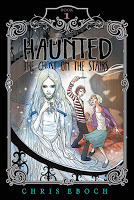 For example, I wanted to write about a brother and sister who travel with a ghost hunter TV show. The girl can see ghosts, but the boy can’t. That gave me the characters and situation, but no problem or goal. Goals come from need or desire. What did they want that could sustain a series?
For example, I wanted to write about a brother and sister who travel with a ghost hunter TV show. The girl can see ghosts, but the boy can’t. That gave me the characters and situation, but no problem or goal. Goals come from need or desire. What did they want that could sustain a series?Tania feels sorry for the ghosts and wants to help them, while keeping her gift a secret from everyone but her brother. Jon wants to help and protect his sister, but sometimes feels overwhelmed by the responsibility. Now we have characters with problems and goals. The story is off to a good start. (This became the four-book Haunted series.)
Tips:
· Make sure your idea is specific and narrow. Focus on an individual person and situation, not a universal concept. For example, don’t try to write about “racism.” Instead, write about one character facing racism in a particular situation.
· Ask why the goal is important to the character. The longer the story, the higher the stakes needed to sustain it. A short story character might want to win a contest; a novel character might need to save the world.
· Ask why this goal is difficult. If reaching the goal is too easy, there is little tension and the story is too short. The goal should be possible, but just barely. It might even seem impossible. The reader should believe that the main character could fail. (I go into more detail on this in a chapter on Characters in the book.)
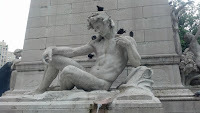 Is your character just sitting there?
Is your character just sitting there?· Even if your main problem is external, give the character an internal flaw that contributes to the difficulty. This adds complications and also makes your character seem more real. For some internal flaws, see the seven deadly sins: lust, gluttony, greed, sloth, wrath, envy, and pride.
· Test the idea. Change the character’s age, gender, or looks. Change the point of view, setting, external conflict, or internal conflict. Choose the combination that has the most dramatic potential.
 Remember the magic of bedtime stories? When you write for children, you have the most appreciative audience in the world. But to reach that audience, you need to write fresh, dynamic stories, whether you’re writing rhymed picture books, middle grade mysteries, edgy teen novels, nonfiction, or something else.
Remember the magic of bedtime stories? When you write for children, you have the most appreciative audience in the world. But to reach that audience, you need to write fresh, dynamic stories, whether you’re writing rhymed picture books, middle grade mysteries, edgy teen novels, nonfiction, or something else.In this book, you will learn:
How to explore the wide variety of age ranges, genres, and styles in writing stories, articles and books for young people.How to find ideas.How to develop an idea into a story, article, or book.The basics of character development, plot, setting, and theme.How to use point of view, dialogue, and thoughts.How to edit your work and get critiques.Where to learn more on various subjects.
Order for Kindle, in paperback, or in Large Print paperback.
Published on January 15, 2020 04:00



